During the late 1970s, both Chrysler and American Motors were in trouble and sinking fast. The United States government determined that Chrysler was too big to fail and bailed out the company with guaranteed loans, while deciding that AMC was just the right size to fail. That’s when the French government stepped up, with government-owned Renault plowing $150 million into AMC and providing much-needed design and engineering expertise for the crew in Kenosha. Though the resulting Renault Alliance/Encore didn’t save AMC as planned, some of the Renault-inspired AMC products had long-lasting influence. One was the Eagle Premier, which provided a chassis design that lived on in many Chrysler products for decades to come; another was the XJ Jeep Cherokee. Here’s an early-ish XJ, found in a Denver-area self-service yard over the summer.
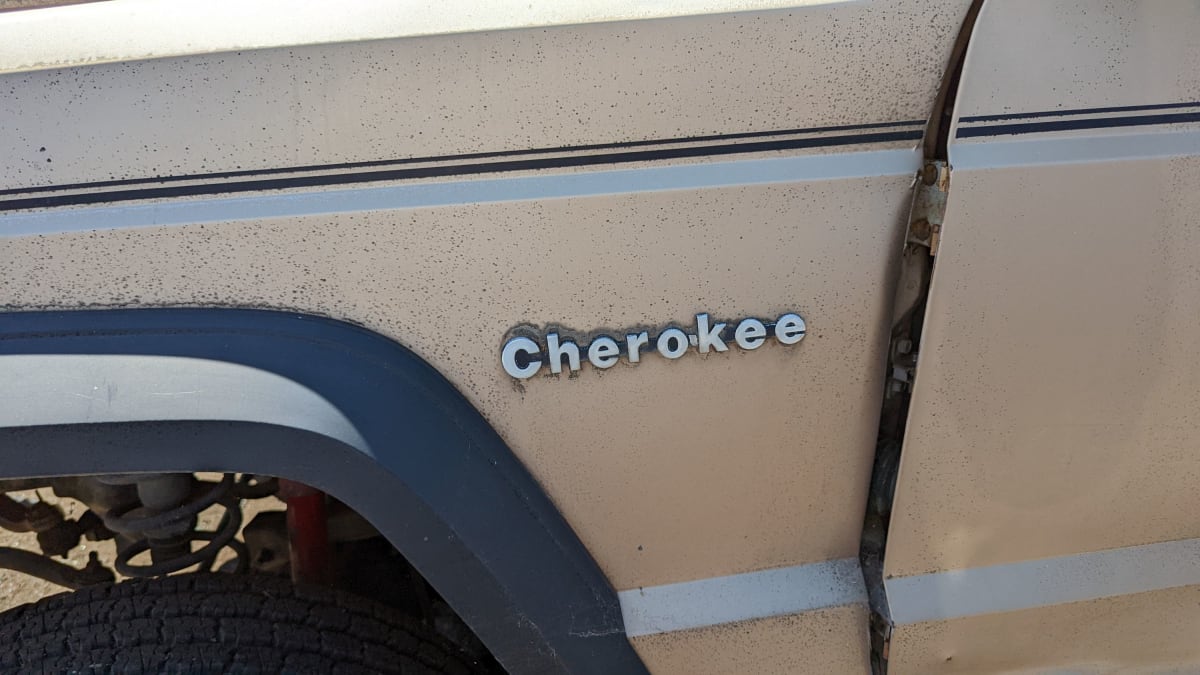
The XJ’s predecessor, the SJ Cherokee, was a big, heavy, military-style truck based on an early-1960s design. It was extremely tough and loved by many, but rode like a truck and drank fuel like a huge truck — a problem that got more troublesome for AMC after the oil crises of 1973 and 1979. Once those Renault engineers (particularly François Castaing) set up shop in Wisconsin, they joined forces with AMC’s team to create a brand-new unibody truck platform and powertrain that was like nothing seen before.
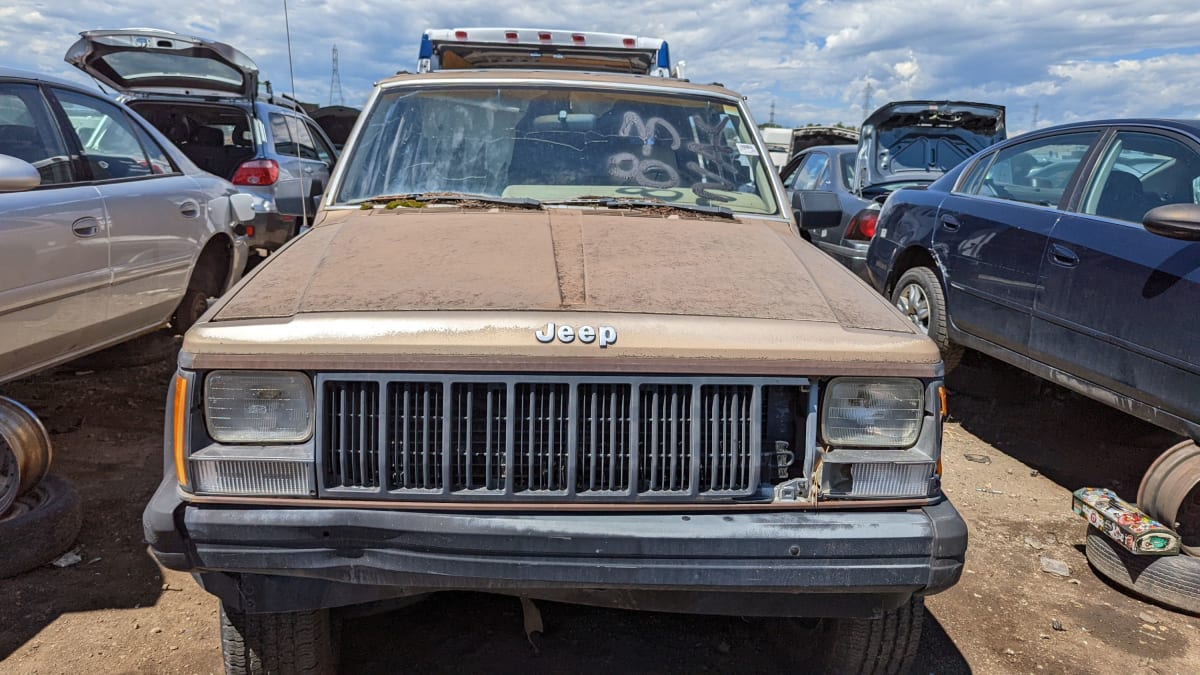
The new Cherokee, which debuted for the 1984 model year, looked just as tough and truckish as the old one, but it weighed 1,200 pounds less while retaining nearly as much interior space. It was competent off-road but rode more like a car (which, AMC had just learned with the Eagle, was a selling point to American vehicle shoppers). You could drive it to the office park or mall and get acceptable fuel economy and comfort while still looking macho and feeling like a free-spirited Jeep pilot in the great outdoors.

The XJ Cherokee stayed in production all the way into the 21st century, and proved to be the decisive influence that inspired the vehicles that most Americans drive today: unibody machines with all-wheel-drive that look tall and intimidating. Lee Iacocca recognized a perennial sales hit when he saw one, and the XJ Cherokee was a big factor in his decision to buy AMC in 1987.
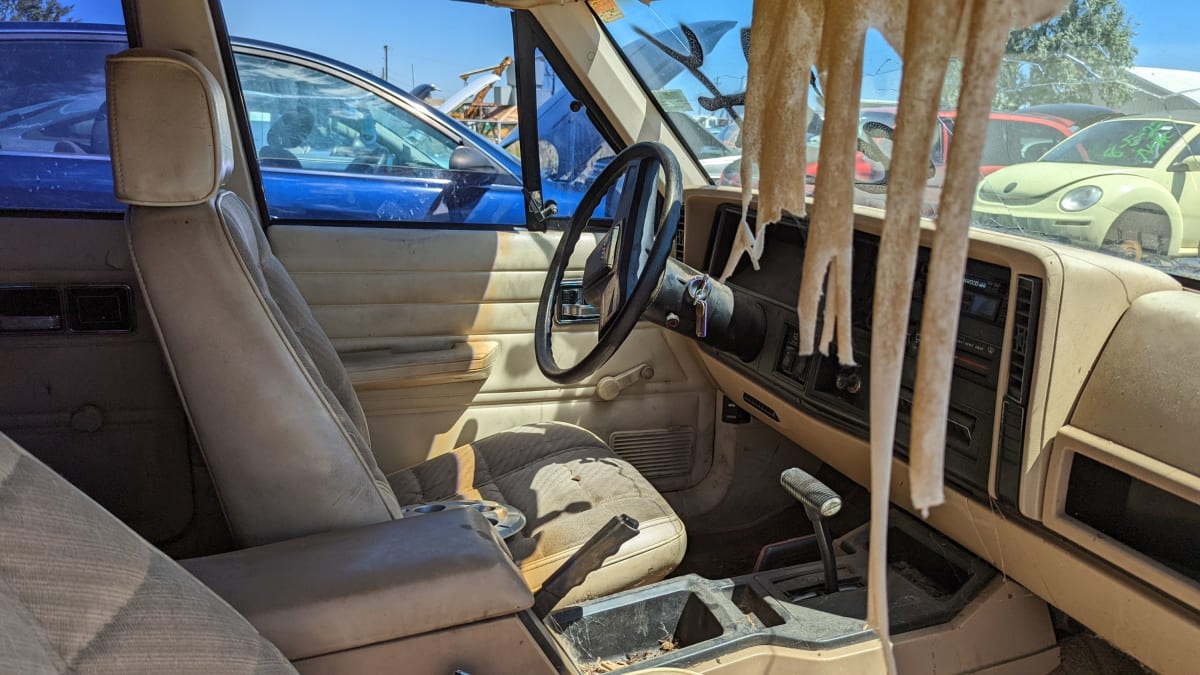
This one was built during the early years of Chrysler’s ownership of Jeep, and it’s a base-level four-wheel-drive four-door from the old Toledo South assembly plant.
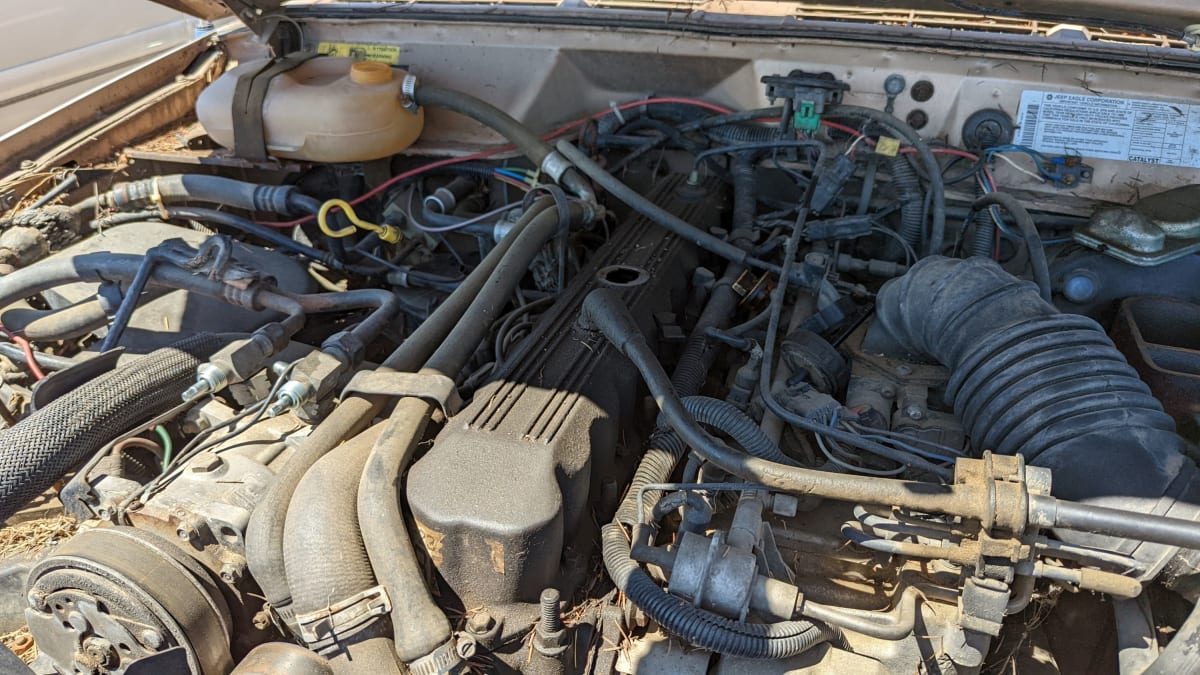
The engine is the 4.0-liter version of AMC’s straight-six, first used in 1965 Ramblers. This one has the 1987-1990 Renault-Bendix EFI system and was rated at 177 horsepower and 224 pound-feet. 1990 was the last year for the AMC 2.5-liter four-cylinder engine in the Cherokee, though few were so equipped.
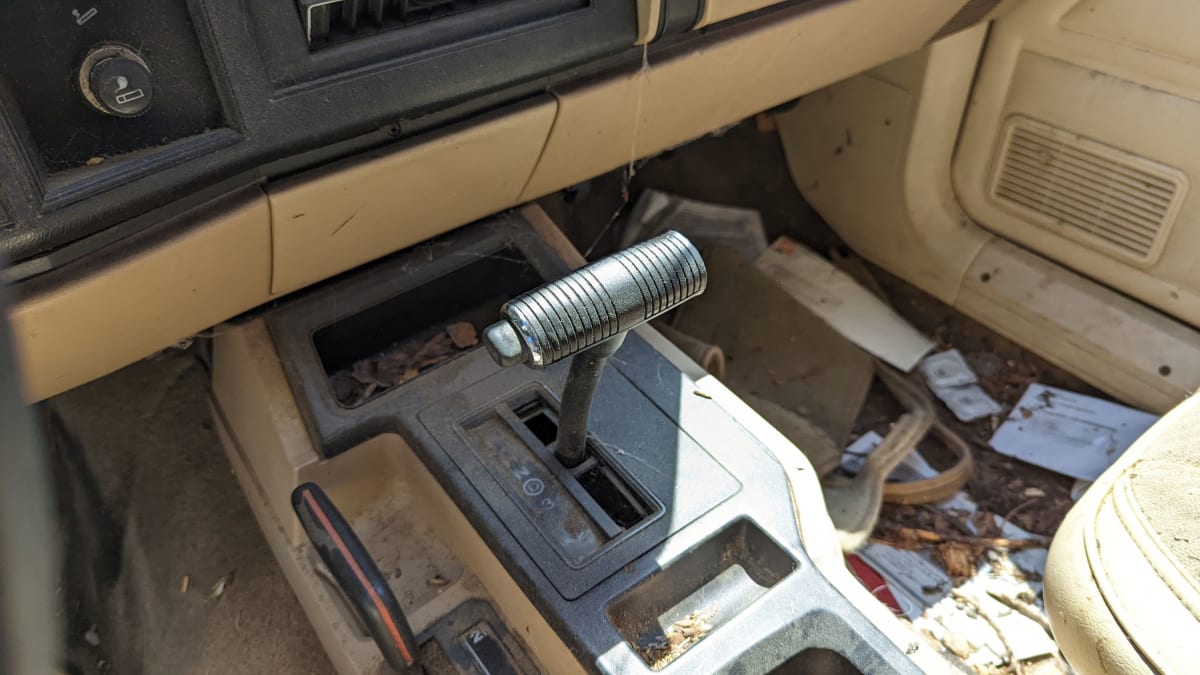
The 1990 Cherokee could be had with a manual transmission and even rear-wheel-drive; this one has the most common 4×4/automatic configuration.
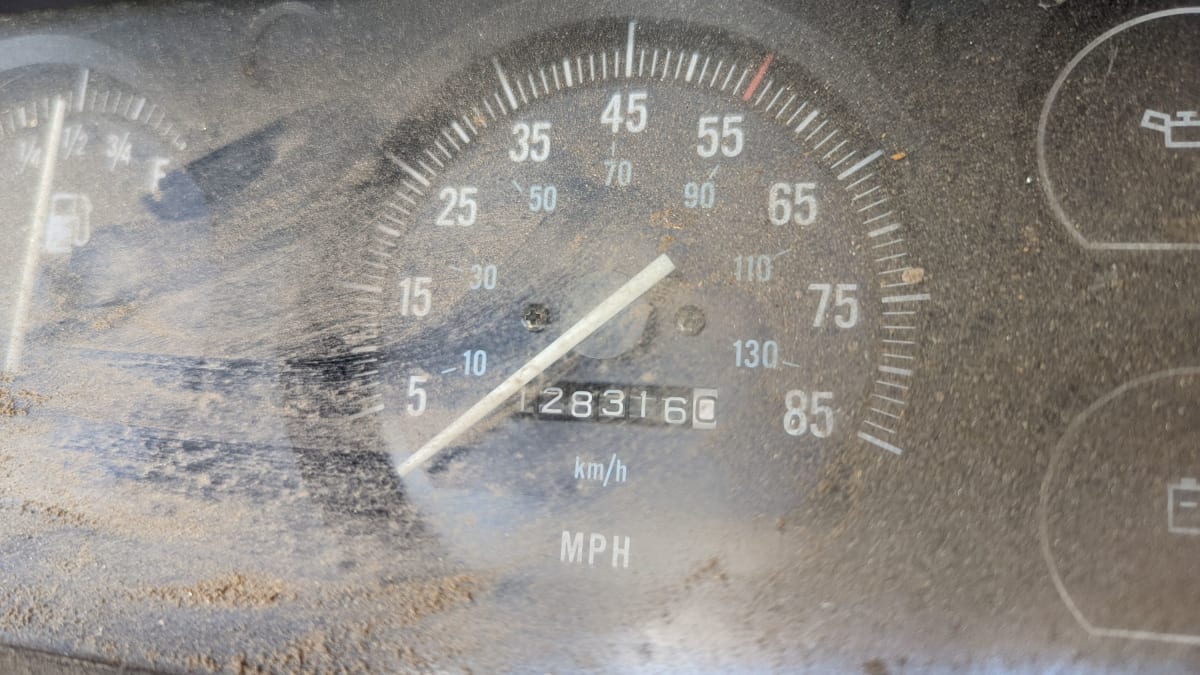
Not much more than 100,000 miles showing on the odometer.
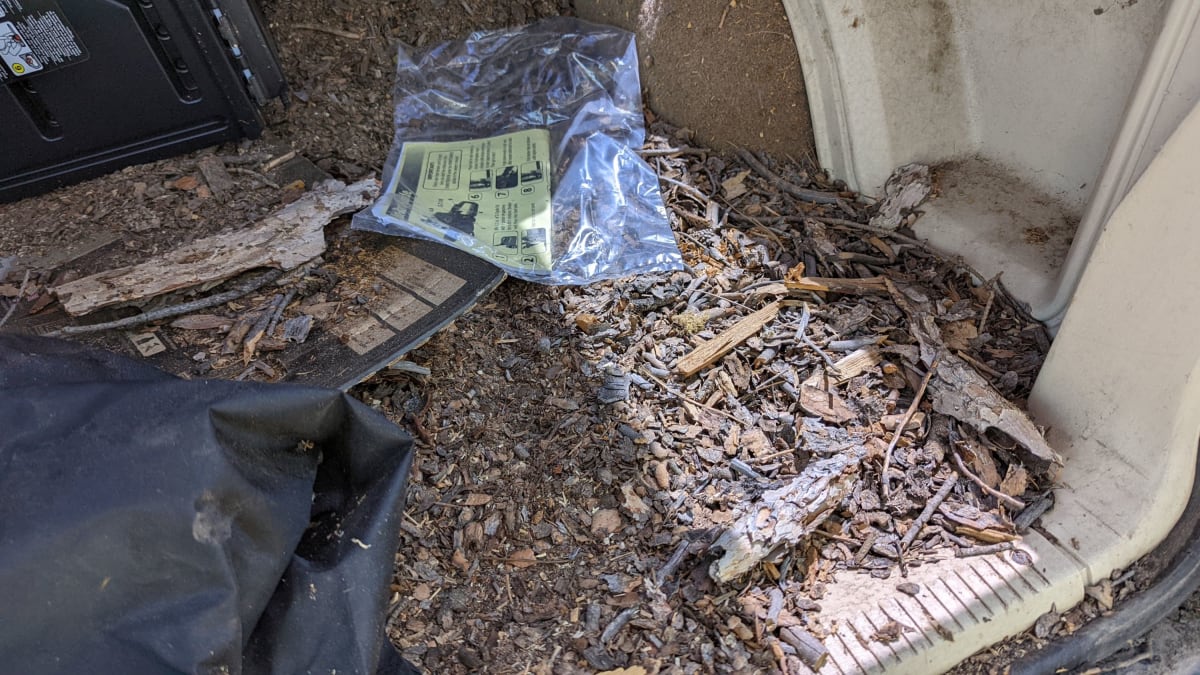
The interior is full of wood-chipper mulch.
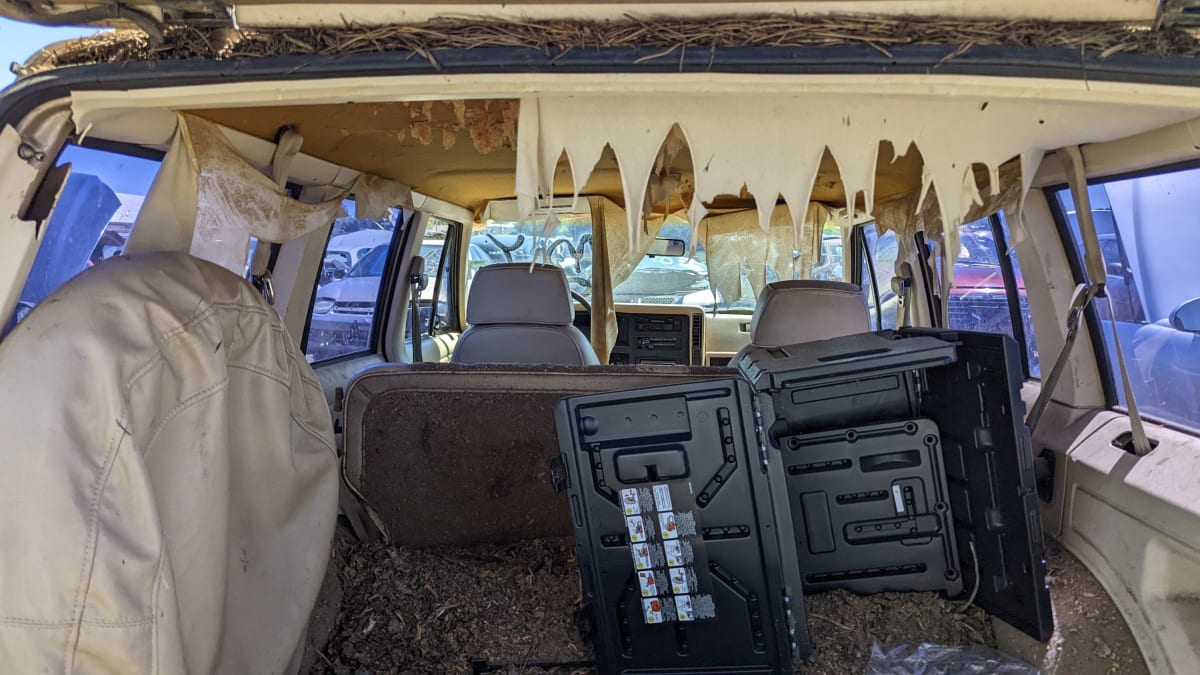
Other than the mulch and the shredded headliner, this truck’s condition doesn’t seem too bad. XJs in nice shape can be worth real money nowadays, but I see plenty of examples like this one in Front Range boneyards.
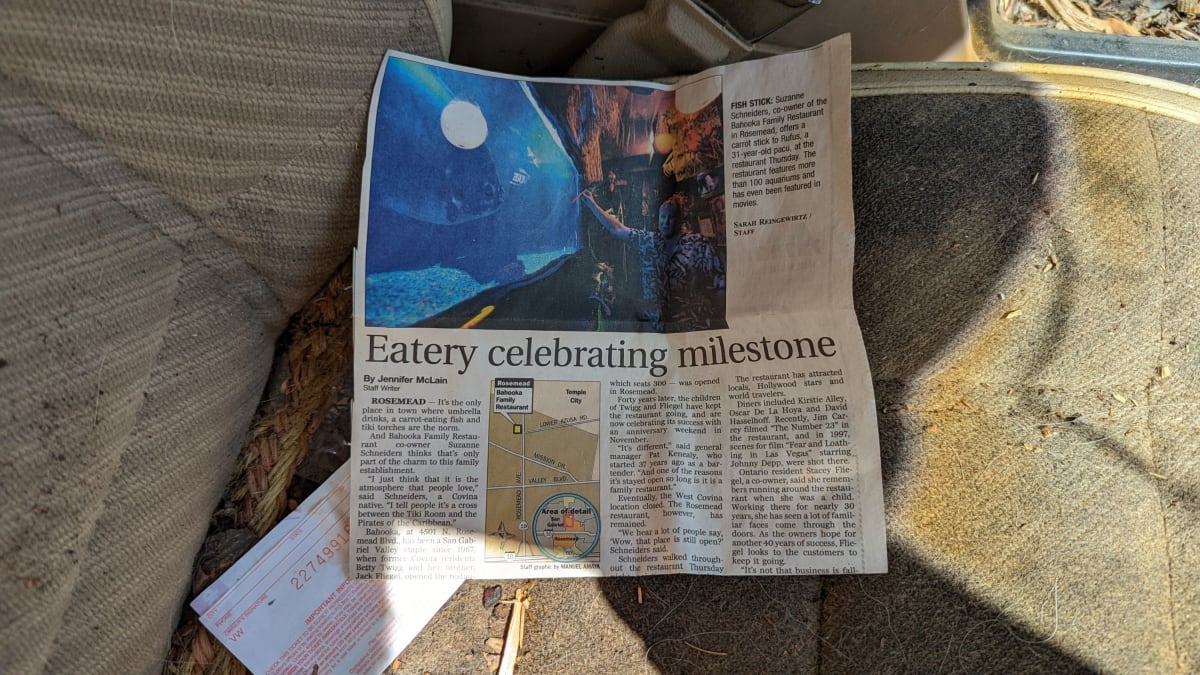
Here’s a newspaper clipping about the now-defunct Bahooka Family Restaurant in Rosemead, California, where scenes for “Fear and Loathing in Las Vegas” were shot. You never know what you’ll find in a junkyard vehicle!
Chrysler worked hard to overcome the anti-unibody bias in the off-roading world, leading to action-packed TV commercials like this one.
Of course, there were also ads touting safety and comfort in addition to the Cherokee’s prowess in the bundóks.
